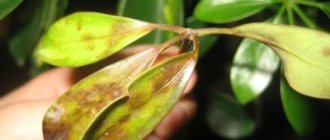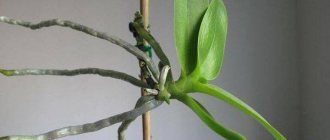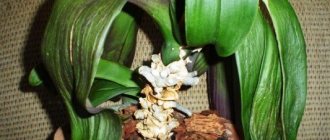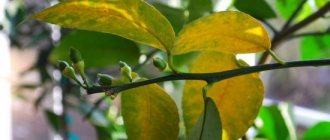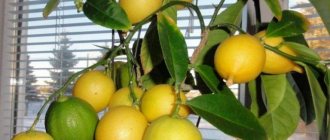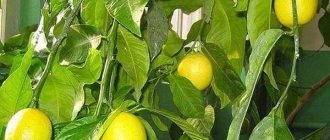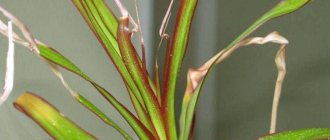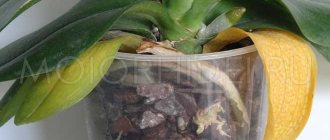Lemon takes root well in a pot at home. It is even capable of blooming and bearing fruit in an apartment. Despite the fact that even a novice citrus grower can cope with growing citrus, the plant is demanding in terms of care and growing conditions. If they are violated, it begins to hurt and dies.
One of the most obvious and dangerous symptoms that a plant feels uncomfortable is leaf falling. Citrus fruits are evergreen plants and this phenomenon is not typical for healthy trees. The cause of the problem may lie in violation of the rules of care or damage to the plant by pests. How to identify the cause and save the lemon - read on.
What to do if a lemon drops its leaves
If the leaves of a lemon change and then fall off, then something is wrong with the citrus. Each negative factor is accompanied by its own symptoms. If the leaves are pale, without gloss, shoot formation is weak, the crown is loose, then the reason is in the lighting, you must:
- move the plant to the window on the south side;
- create a screen that reflects the sun's rays onto the plant;
- install phytolamps, with their help you can extend the illuminated time of day.
Darkening of the top of the sheet can be caused by hot air in high temperatures in the room or near the radiator. In summer, it is recommended to take the plant out onto the balcony or onto the plot. If this is not possible, the room is ventilated, and the citrus is sprayed every day.
Do not allow the soil to dry out. In winter, lower the temperature and humidify the air around the tree. If possible, place the pots in a tray with water or place small containers with liquid around the tree.
Excessive watering can cause blackening of the leaf plate, which means that rotting of the root system has spread to the crown. In this case, quick resuscitation is necessary, otherwise the tree will die. The steps are as follows:
- Remove the earthen lump from the pot.
- To free the roots from compressed soil, it is recommended to wash them and remove the soil.
- There will definitely be areas of necrosis or completely dead shoots in the root system. They are cut off, the sections are treated with “Fundazol”, and lowered into “Kornevin”.
- The soil is completely changed, the tree is planted in a larger pot.
Important! In order not to deprive the lemon of its last source of nutrition, damaged leaves are not removed.
Cut off the problematic part of the leaf plate and branches without leaves protruding beyond the crown.
If for some reason the citrus tree has not been watered for a long time and the leaves of the lemon begin to dry out, the first watering is carried out with a small volume of water, and after one day the amount of liquid is increased. Water the plant with more water until it reaches the usual rate. If the leaves no longer fall off, it means the plant was able to withstand the stress and everything was done correctly.
Spots on the leaves indicate the presence of pests:
- places where scale insects accumulate appear as yellow fragments on the leaves;
- ticks are identified by small dots and white dense cobwebs from the inside of the plate;
- aphids deform the leaves, they curl, turn yellow and fall off.
Used against parasitic insects “Fitoverm”, “Tanrek”. Damage by homos inevitably leads to leaf fall. The infection is determined by the gum on the branches. Eliminate the disease with Antracola and Quadris.
Curling of leaves, if there are no pests, can be caused by a lack of trace elements (calcium, bromine, magnesium). The leaves turn white in the central part, lose turgor, brown spots may appear, and the crown falls off.
Advice! The plant is fed with nitrogen, phosphorus, potassium fertilizers and organic matter throughout the year.
Podura (springtails, forktails)
The appearance of these millimeter-long wingless flower pests usually indicates excessive moisture in indoor plants. They live in the soil, eating small roots of flowers. If there are a lot of them, then you can notice colonies of insects on the bottom hole of the pot or on the ground. They look like whitish particles. They do not cause any particular harm to plants; rather, they even bring benefit to attentive gardeners, signaling by their appearance that it is necessary to reduce watering of plants in order to avoid rotting of the roots. The soil in places where insects accumulate is replaced and sprinkled with sand or crushed tobacco.
Pests of citrus fruits at home
Lemon is a plant that, unfortunately, is often attacked by various parasites, such as:
- Shield.
- Spider mite.
- Mealy nigella.
- Nematode.
- Aphid.
- Garden slug.
Scale insect: how to get rid of it?
Scale insects are the most common tree pest.
The first sign of its presence is a sticky coating on the leaves of the lemon. Convexities of about 4 mm appear on the leaves and branches, almost invisible to the eye. Covered with a dense waxy shell, they become invulnerable to chemicals. You can combat sticky leaves with insecticides. During watering, the poison from the leaves is washed into the soil, absorbed by the roots and the plant becomes poisonous.
ATTENTION! The scale insect that feeds on lemon juice dies. But despite the effectiveness of this method, the fruits become unsuitable for food.
You can also fight scale insects using folk methods. They are very effective, but more troublesome.
Wash the leaves with soapy water several times a day until the pest completely disappears. Mix green soap (5g) with anabasine sulfate (2g) and dissolve in warm water. Washing is done once a week, followed by rinsing the solution with water every other day.
Spraying with a solution of soap and kerosene. To do this, dissolve 5g of soap and 10g of kerosene in a liter of warm water and spray the plant twice a week. You can clearly see this method in action in the video below:
Tick: treatment
Spider mites are another common pest on lemons. There are yellow, red, white, and transparent types of spider mites.
It can be found on the stem and underside of the leaves, the juice from which it feeds. During this process, the leaves begin to turn yellow and dry out for no apparent reason.
It is not easy to notice the pest, given its size of 1–2 mm. But the web on the underside of the leaf is clearly visible, as are the yellow dots at the places where it is attached.
NOTE! A solution of laundry soap gives a good effect when fighting it. It is used to treat stems and leaf surfaces.
The tree is also sprayed with sulfur and insecticides, and the leaves are wiped with alcohol. But the most effective and harmless way is ultraviolet light. Warming up for two minutes under an ultraviolet lamp has a detrimental effect on the tick. In addition, this method helps to heal and strengthen the plant.
In this article, we found out such questions as: why does a lemon lose its leaves and what to do about it, what to do if the lemon tree has dried up.
The main thing is to properly care for lemons, as well as to identify and take measures in time for various diseases and the presence of parasites. Then the lemon tree will delight the eye with green foliage and juicy aromatic fruits for a long time.
Impact of temperature
Lemon has the highest requirements for temperature, light and humidity. The leaves and trunk feel comfortable at 17 °C, and for normal fruit ripening, at least 22–23 °C is required.
The plant reacts extremely negatively to sudden changes in temperature. A sharp drop in temperature along with dry air leads to inevitable stress. First, the flowers and some ovaries begin to fall off, and then the leaves. This is especially true in the autumn-winter period (you will find the rules for caring for indoor lemons in the fall here, and in this article we talked about how to care for a tree in winter).
The air temperature should be identical to the temperature of the soil in the pot. Such differences can occur if a lemon standing outside and accustomed to a slight cold snap is suddenly brought into a heated room. The result may be shedding of leaves.
Drafts and simultaneous flows of warm and cold air also have a negative effect. Under such unfavorable conditions, lemon leaves begin to curl and curl and then fall off.
A lemon tree can become not just an interesting addition to your interior, but also delight your household with tasty and healthy fruits. Read our articles about the features of growing lemon at home:
- How to plant a seed and root cuttings?
- What care does the tree need?
- How to prune a plant and form a crown?
Climate
Spray the plant regularly
Young citrus requires constant spraying of the crown under normal conditions. The suitable temperature for the development of indoor plants is 18°C-20°C. In the hot season, plants are sprayed 2-3 times a week.
In winter, the number of procedures depends on the power of the heating devices. If the air is warm and the plant dries out and sheds its leaves, spraying is carried out daily. At cool temperatures, 2-3 procedures are performed per week.
Read also: How to form isomers and homologues?
If moisture is not added on time and the air is dry, the leaves will fly off. To revive it, the plant is regularly treated. Also, indoor lemon is placed away from heating devices or covered with a cloth during the day. The lack of moisture will be stopped by purchasing an air humidifier.
Cold air
In winter, lemon feels normal at a temperature of 12°C-14°C. In colder air, the plant sheds its leaves. Growing lemon on an unglazed balcony or street in winter is prohibited.
To restore the plant, it should not be suddenly brought into heat. Lemon does not tolerate sudden changes in temperature, and therefore will lose even more leaves from the crown.
The room temperature is increased gradually. During care, carefully monitor the condition of the leaves and shoots. If they look better, the temperature is increased slightly. The tree is also protected from drafts.
Fever
Subtropical plants need to simulate seasonal dormancy - a decrease in winter temperatures. The heat in the room in winter causes the same problems as lack of lighting: the plant simply starves and sheds its leaves. The temperature range from 10 to 15 degrees can be considered optimal for keeping lemon in winter.
Ways to solve the problem:
- move the lemon to a cool (but not cold) place;
- shield the tree from the heating radiator - fence it off with film, plexiglass, or cover the radiator with a cloth;
- increase air humidity, regularly spray the plant;
- if it is impossible to reduce the air temperature, you need to increase the lighting intensity using backlighting.
Why did the lemon drop its leaves - causes and solutions to problems
The lack of light in the room where the lemon tree grows leads to the natural processes of the plant to reduce the green part. Citrus crops are susceptible to this phenomenon, as are some related plants. As a rule, at home, lemon leaf fall begins due to unsuitable or uncomfortable growing conditions. In autumn and winter, you should increase the lighting time, for example, using lamps for seedlings or placing a pot of lemon near a window facing south. Excessive moisture leads to wetness and acidification of the soil, which acquires a dense structure, oxygen practically does not circulate in it and access to the roots decreases sharply, and various processes of decay begin. Small roots begin to gradually die off, biological processes are disrupted, as a result of which the lemon turns yellow and sheds its leaves.
Insufficient moisture leads to the soil drying out, the roots die, the beneficial microelements are not in the green part, so you can often see a picture of a lemon dropping its leaves in the summer. The tree comes into stress and begins to actively get rid of leaves in order to somehow retain the existing moisture. Lack of watering is especially dangerous for young plants than for lemons five years old and older, which have a much greater moisture reserve. In addition, after a long drought, abundant watering will put the lemon in a state of stress, so dropping leaves in this case is the norm.
To prevent the foliage from turning yellow and then dropping, you need to know how to properly care for lemons at home. Avoid sudden temperature changes, do not dry out the soil, water as needed. If for some reason the earthen lump in a pot with lemon is dry, water it gradually, without flooding, in small doses at intervals of several hours. After a day, gradually increase the volume of water to normal until all the soil is saturated.
During the growing season, lemon actively consumes nutrients, so soil depletion is unacceptable. Feed the tree in a timely manner using special complexes for citrus fruits. You should not resort only to fertilizers of organic origin, prepared with your own hands; citrus needs a balanced composition of elements. If, of course, you are confident in the quality and usefulness of the prepared homemade fertilizer and the lemon blooms, smells and bears fruit, then feel free to feed it. A lack of microelements (boron, zinc, molybdenum, etc.) leads to lemon leaves turning red, yellow, brown, drying out at the edges and crumbling. Dry and hot air at home is not suitable for cultivating lemon. Insufficient humidity and high temperature only contribute to the shedding of leaves. Move the lemon away from the radiators in the winter or cover the radiator with a thick cloth, regularly spray the green mass with a spray bottle. Don't forget about the shower, which loves lemon so much.
As for low temperatures, you should not keep lemon in a room where the temperature drops below + 10 °C. otherwise, you may see leaf fall. This difficulty arises for owners of winter greenhouses, where it is not always possible to regulate the air temperature. The citrus tree should not be left in drafts, so as not to wonder why the lemon tree turns yellow...
Overfilling or drying the soil
Even taking into account the fact that the plant is considered subtropical, and therefore loves moisture and high air humidity, it is still undesirable to fill it with water excessively. Let's say you very often moisten the soil composition of the lemon and spray the tree. In addition, it happens that the pot does not have drainage holes, which will only worsen the situation.
What does the florist who made a mistake deal with as a result? The soil in the flowerpot gradually becomes compacted and the pores become clogged. Now the air that the rhizome needs no longer circulates so easily in the substrate. Sooner or later, the domestic tree in the house simply dries out, since the root system begins to rot due to excess moisture. The indoor lemon drops its leaves, and all because due to the high density of the soil in the pot, the rhizome does not receive nutritional components.
But the main thing in caring for a home lemon tree is the golden mean. If excessive watering can destroy a plant in a matter of weeks, a lack of moisture in the soil can also cause a lot of harm. If you do not water your indoor shrub regularly, the soil gradually begins to dry out. The rhizome again does not absorb all the necessary beneficial components.
In the periods between moistening the substrate, be sure to monitor the condition of the soil: as soon as it becomes a little damp, you should start irrigating the soil again. Do not wait until the earthen ball dries completely. In this case, excessive watering will create a real stressful situation for the indoor shrub. The problem can be solved by watering the soil with small volumes of water approximately once every 2-3 hours. This way you will bring the lemon back to life after water fasting.
Spots on leaves
Yellow spots on leaves. Yellowing of the leaves of a newly purchased lemon is normal. The plant is trying to adapt to new living conditions. Why do the leaves turn yellow after being at home for a sufficient time and what to do? We will find out further. Most likely, the leaves are damaged by sunburn or excessive fertilization.
As much as he loves sunlight, he should not receive them openly. The pot should be kept on the south side so that there is adequate lighting, but the plant needs to be slightly shaded in the summer heat. If the reason is excessive fertilizing, then you should wash the soil in the pot.
Brown spots on leaves. Lemon leaves begin to darken, turn brown and acquire a rusty tint due to a lack of phosphorus. It starts at the tips of the leaves and then spreads to the sides of the leaf.
Fruits also suffer from a lack of this microelement. The peel becomes thick and they themselves take on an ugly shape.
Root mealybug
White aphids, which settle on the roots and lower parts of the stems in the form of a whitish coating. At the same time, the flowers do not grow, the leaves turn pale, dull, and wrinkle. Weakened plants often suffer from fungal diseases. Most often, these parasites attack wintering plants with minimal watering.
In spring and autumn, they need to be watered preventatively three times with insecticides every couple of weeks. Damaged fragments (and partly the crown) of affected plants are trimmed, washing the roots with an insecticide for ten minutes. Then they are transplanted into new land.
Other more understandable causes of leaf drop include:
- frequent change of tree location
- untimely replanting/replanting with soil replacement instead of transshipment
- type of substrate that does not correspond to the type of plant
- very depleted soil
- poor or excessive fertilizing/fertilizing in a dry earthen ball/poisoning
- bad water
Eliminate the unfavorable factor - and your plant will again delight you only with growing, and not falling leaves.
Why do the leaves of the rubber-bearing ficus robusta turn yellow?
First of all, you need to pay attention to the conditions in which your plant is kept. Although Ficus rubber is quite shade-tolerant, it still needs light
Reason 1. Your ficus does not have enough light - the main source of nutrition for the plant. To survive, the plant turns off power to the lower, oldest leaves. The leaf gradually begins to turn yellow and eventually comes off.
There can be only one recommendation here - move the Ficus elastica closer to the light. Turn on fluorescent lamps in the office, install a phytolamp if possible.
Reason 2: lack of nutrients in the soil. If you are sure that the Ficus is getting enough light, but the leaves continue to turn yellow, remember the last time you replanted the plant.
Recommendations: it is necessary to transplant the ficus into a new substrate. It is advisable to use a special “soil for ficuses”. Read how to replant indoor flowers and see photos of our transplants.
In the period from April to September, in order to prevent a lack of nutrients, it is necessary to fertilize your pet. At the beginning of spring, it is better to take fertilizers with a high nitrogen content. There are numbers on the label next to the letters (for example NPK 30-15-15 or N30-P10-K5). So next to the letter N there should be the largest number.
In the fall, buy fertilizer with a low Nitrogen content (near the letter N is the smallest number).
Also see the packaging for the frequency with which fertilizers are applied to the soil.
Why did the leaves of a houseplant fall and what to do about it?
Caring for citrus fruits in apartment conditions is quite difficult. If the plant has dropped its leaves, do not be too upset. It is necessary to find out why this happened and take measures to improve it. There are a number of reasons why a tree may lose all its leaves.
Dropping leaves is the result of violating the rules of care and maintenance. Let's look at the most common mistakes made when caring for a plant and measures to correct them.
Bay of plants. What to do to resuscitate the plant? The main signs of lemon flooding are the yellowness of the leaves from the base to the edge and constantly wet soil in the pot. The tree begins to wither from the top, limp leaves fall off, the work of the root system slows down, and the thermoregulation of the entire plant is disrupted. How to revive him? The most effective way in this case is an emergency transplant. But if most of the leaves are healthy and holding tightly, the crown has not withered and it’s winter outside, you don’t need to replant the lemon. The roots of the plant need to provide air exchange. It is necessary to loosen and pierce the ground with a thin stick, and increase the drainage holes in the pot. Transfer the tree to a warm, dry room, this will help dry out the earthen ball.
Acclimatization after purchase. What to do to resuscitate the plant? When changing their habitat and usual climate from a store or greenhouse to an ordinary apartment, citrus fruits can shed their leaves. The conditions of the apartment are not ideal for them, they are far from natural. During the acclimatization period, the lemon should be placed in the brightest, warmest place without drafts next to a humidifier and lighting in the evening. The tree needs to be sprayed once every 2-3 days. Old leaves will gradually fall off due to the large amount of stimulating substances that were added at the place of production.
Drafts. What to do to resuscitate the plant? Despite the fact that the room should be well ventilated, lemon does not tolerate drafts and can instantly become offended and drop its leaves. The plant should be placed away from windows and entrance doors, gas stove and ventilation.
Stress due to change of location
What to do to resuscitate the plant? It is very important for a citrus bush to grow in one place. He doesn’t like moving around the apartment and reacts negatively to this
Its branches begin to dry out and leaves fall off. Follow the watering rules, regularly spray the crown without getting it on the flowers.
Pot size is too large. What to do to resuscitate the plant? A common mistake novice gardeners make is not choosing the right pot for the plant. If the pot is too large, a lot of excess water gets in, and the plant does not have time to consume it. The soil becomes waterlogged. Also, the tree will actively grow roots to occupy the free space of the earth and will not grow externally. If it's spring outside, it is recommended to replant the lemon in a pot the size of fresh, nutritious citrus soil. In winter, it is difficult for the plant to adapt after transplantation.
Abundant watering after a long drought. What to do to resuscitate the plant? If the plant has not been watered for a long time, and then it is moistened abundantly, all its leaves, even apparently healthy ones, may fall off. As a result of prolonged drought, some of the roots dry out and the tree has nothing to absorb excess water. In this case, the roots that could still be saved rot. The fallen lemon is gradually reanimated. Start by spraying the leaves and top layer of soil with water. Day after day, the amount of moisture increases. It is the gradual addition of water and humidity in the room that will help restore fallen leaves without stressing the tree.
Watering the plant with too cold water. What to do to resuscitate the plant? Cold water and air cause the plant to become stressed and shed its leaves. Lemon needs to be provided with a comfortable place to live. Normalize proper watering. Water as needed with settled water at room temperature.
Nematodes
These are 3 groups of white round small worms that live in different parts of flowers:
Root. Parasites attach themselves to roots, destroying them, and can live there for many years, waiting for suitable conditions. Plants wither, do not grow, flowers become smaller, branches become deformed.
Read also: Secrets of the “Shadow of Chernobyl”
Stem. They live at the base of the stem and cause plant death due to lack of nutrition.
Leafy. Millimeter earthworms. When they appear on the leaves, greenish, quickly darkening spots are observed. Plant buds do not develop, young shoots, stem tips and buds dry out. These individuals spread through contaminated water.
To prevent the entry of these almost incurable pests, the soil is disinfected at temperatures above 50 degrees for 10 minutes or by treating it with 10% formaldehyde, washing it off only after a couple of hours. Garden tools and flower containers are also disinfected.
It's difficult to get rid of. Weakly affected plants are treated with Dekaris (a tablet dissolves in a liter of liquid) or Heterophos. Neglected flowers and the soil from them are destroyed.
Video “Restoring Dried Lemon”
From this video you will learn how to restore dried lemon.
Exotic plants grown on a windowsill have long since surprised no one. Most often, lemons are grown at home. Under unfavorable conditions, he gets sick. Lemon ailments can manifest themselves in different ways: sometimes it drops its leaves, and sometimes the leaves turn yellow and curl. Those who have been growing plants recently do not know the reason why leaves fall and what to do in such a situation. Before resuscitating a plant, it is necessary to understand the causes of the disease.
A common problem with lemons is loss of leaves.
Why did the leaves of a houseplant fall and what to do about it?
Caring for citrus fruits in apartment conditions is quite difficult. If the plant has dropped its leaves, do not be too upset. It is necessary to find out why this happened and take measures to improve it. There are a number of reasons why a tree may lose all its leaves.
Dropping leaves is the result of violating the rules of care and maintenance. Let's look at the most common mistakes made when caring for a plant and measures to correct them.
Bay of plants. What to do to resuscitate the plant? The main signs of lemon flooding are the yellowness of the leaves from the base to the edge and constantly wet soil in the pot. The tree begins to wither from the top, limp leaves fall off, the work of the root system slows down, and the thermoregulation of the entire plant is disrupted. How to revive it? The most effective way in this case is an emergency transplant. But if most of the leaves are healthy and holding tightly, the crown has not withered and it’s winter outside, you don’t need to replant the lemon. The roots of the plant need to provide air exchange. It is necessary to loosen and pierce the soil with a thin stick, to enlarge the drainage holes in the pot. Transfer the tree to a warm, dry room, this will help dry out the earthen ball.
Acclimatization after purchase. What to do to resuscitate the plant? When changing their habitat and usual climate from a store or greenhouse to an ordinary apartment, citrus fruits can shed their leaves. The apartment conditions for them are not ideal, far from natural. During the acclimatization period, the lemon should be placed in the brightest, warmest place without drafts next to a humidifier and lighting in the evening. The tree needs to be sprayed once every 2-3 days. Old leaves will gradually fall off due to the large amount of stimulating substances that were added at the point of production.
Drafts. What to do to resuscitate the plant? Despite the fact that the room should be well ventilated, lemon does not tolerate drafts and can instantly become offended and drop its leaves. The plant should be placed away from windows and entrance doors, gas stove and ventilation. Stress due to change of location
What to do to resuscitate the plant? It is very important for a citrus bush to grow in one place. He doesn’t like moving around the apartment and reacts negatively to this
Its branches begin to dry out and leaves fall off. Follow the watering rules, regularly spray the crown without getting it on the flowers. Pot size is too large. What to do to resuscitate the plant? A common mistake novice gardeners make is not choosing the right pot for the plant. If the pot is too large, a lot of excess water gets in, and the plant does not have time to consume it. The soil becomes waterlogged. Also, the tree will actively grow roots to occupy the free space of the earth and will not grow externally. If it's spring outside, it is recommended to replant the lemon in a pot the size of fresh, nutritious citrus soil. In winter, it is difficult for the plant to adapt after transplantation.
Abundant watering after a long drought. What to do to resuscitate the plant? If the plant has not been watered for a long time, and then it is moistened abundantly, all its leaves, even apparently healthy ones, may fall off. As a result of prolonged drought, some of the roots dry out and the tree has nothing to absorb excess water. In this case, the roots that could still be saved rot. The fallen lemon is gradually reanimated. Start by spraying the leaves and top layer of soil with water. Day after day, the amount of moisture increases. It is the gradual addition of water and humidity in the room that will help restore fallen leaves without stressing the tree.
Watering the plant with too cold water. What to do to resuscitate the plant? Cold water and air cause the plant to become stressed and shed its leaves. Lemon needs to be provided with a comfortable place to live. Normalize proper watering. Water as needed with settled water at room temperature.
Reason 2. Excessive watering
Excessive frequent watering usually leads to the death of the plant. In constantly moist soil, the optimal development of microbiological processes in the soil does not occur, the roots suffocate and die. Water for irrigation must be settled, it is better to filter, and even better, freeze and defrost. Citrus fruits do not tolerate chlorine at all; lime water causes chlorosis of the leaves. The water should be a little warm. If you have flooded your lemon, remove it from the pot, blot the earthen ball with paper towels, and air dry it a little. If there are brown soft roots, remove them with a sharp knife or scissors. The cut areas can be sprinkled with ash and Kornevin. Then plant it back in a clean pot with good new drainage, in this case it is better to take light soil - peat + perlite + just a little ready-made soil for citrus fruits. Spray the crown with Epin.
Recommendations and tips
Recommendations and tips for growing lemon at home:
- The best varieties for planting at home are Pavlovsky, Maikopsky, and Chinese Big.
- For planting, it is better to purchase ready-made seedlings from a nursery or flower shop; seedlings grown from seed will not bear fruit soon, and the taste of the fruits of such plants leaves much to be desired.
- During planting, a thick layer of drainage must be poured onto the bottom.
- In summer, if possible, it is better to take the lemon outside or onto the balcony.
- Any soil for planting seedlings will not work; you will have to buy soil mixture for fruit trees at a specialized flower shop.
- It is not recommended to frequently rearrange the pot with the tree; rearrangements are carried out unless absolutely necessary.
- The pot with the plant can be placed even in open sunlight.
- If seeds are used for planting, it is advisable to plant 10-20 pieces at once. Most of the seeds will not sprout anyway, some of the seedlings may die, so usually only a few bushes remain.
Danger of waterlogging
Flooding of lemon roots is especially dangerous in the last month of summer - at the beginning of autumn (that is, before the start of the heating season). At such times, the most significant difference is the difference between night and day temperatures, and the drying out of the soil in the pot depends on the weather, which is unpredictable during this period.
If the rules of care and watering are followed, the citrus plant has good foliage
In the summer, with the beginning of the growing season, a lot of new foliage appears on the tree, and the area of evaporation increases. But in the fall, with the onset of cold weather, young leaves no longer grow, so you need to water less. Changes in the growing season and weather conditions should lead to a revision of the irrigation system. The danger of plants flooding at this time is high, since autumn can be warm, but the plants are already preparing to rest.
A common situation is when they try to revive an already dried out plant with a large volume of water. This is also a dangerous situation. Some of the roots have dried out from lack of moisture, that is, the suction surface has decreased. There is nothing to absorb excess water. The remaining roots that could be saved rot. Reanimation of homemade lemon must follow the rules, then it will lead to a positive result.
Lack of water
But you shouldn’t skimp on water for watering lemons either - a shortage doesn’t lead to anything good either.
The leaves of a tree growing in dry soil also begin to turn yellow, curl, and fall off. The consequences of a lack of life-giving moisture are still the same - small roots die off, and the plant cannot absorb the substances necessary for life from the soil. Which puts the lemon in a stressful state and slows down the circulation of juices through the tissues of the plant. As a result, there is nothing to feed the shoots and foliage growing from above, so you have to discard part of the crown. When trying to bring a lemon that has not been watered for a long time back to life, you cannot immediately start flooding the soil. Because excess water (this has already been discussed) destroys the roots of the plant no less than lack of moisture.
Therefore, in this case, resuscitation of the plant should be carried out gradually: spray water on the leaves, adding a little moisture to the soil. The amount of water needs to be increased daily. Then everything will be fine - the earth will slowly get wet, the amount of moisture will increase, and the lemon will be restored.
Spots on leaves
Yellow spots on leaves. Yellowing of the leaves of a newly purchased lemon is normal. The plant is trying to adapt to new living conditions. Why do the leaves turn yellow after being at home for a sufficient time and what to do? We will find out further. Most likely, the leaves are damaged by sunburn or excessive fertilization.
As much as he loves sunlight, he should not receive them openly. The pot should be kept on the south side so that there is adequate lighting, but the plant needs to be slightly shaded in the summer heat. If the reason is excessive fertilizing, then you should wash the soil in the pot.
Brown spots on leaves. Lemon leaves begin to darken, turn brown and acquire a rusty tint due to a lack of phosphorus. It starts at the tips of the leaves and then spreads to the sides of the leaf.
Fruits also suffer from a lack of this microelement. The peel becomes thick and they themselves take on an ugly shape.
Effect of light
One of the most common causes of leaf loss in indoor trees is improper lighting. The main time of lack of light for lemon is winter. During this period, the fruit requires more ultraviolet radiation, because the air in winter is cold and less humid.
Rules for lighting lemon in winter:
Why do the leaves of indoor lemons dry out? Lemon dries up, what to do | Domostroy Why do the leaves of indoor lemons turn yellow? Why do the leaves of indoor lemons turn yellow? Why do the leaves of indoor lemons turn yellow?
- Location. The plant feels better on a windowsill on the south or east side. It is forbidden to grow indoor lemon near heating devices: they will cause drying and loss of foliage.
- Use of mirrors. To prevent the leaves from drying out, they are placed around the plant. This is how they reflect the sun's rays. As a result, the lemon receives a sufficient amount of ultraviolet radiation.
- Lighting. If it is not possible to provide indoor lemons with natural lighting, artificial lighting is used. To do this, the plant is illuminated with special ultraviolet lamps or daylight devices.
If a lemon has dropped its leaves in warm seasons, change its place. Choose a window sill that receives direct sunlight for at least 3 hours a day. In summer, the plant is taken out onto the terrace or balcony.
Signs of disease on lemon leaves and fruits
Lemon can be affected by various diseases, and you need to carefully monitor the condition of the foliage in order to provide the plant with the necessary help in a timely manner.
Scab
This fungal disease often appears on young leaves. Small yellowish spots form on them, which are then covered with a gray-pink coating. Gradually, the spots spread to other parts of the crown, and the affected leaves dry out and die. Fruiting stops, and the fruits that have already appeared also become stained and fall off.
On scab-affected leaves and lemon fruits, spots with a pinkish-gray coating appear
Experienced flower growers claim that scab can be successfully treated with Bordeaux mixture. To prepare it:
- Dilute 100 g of copper sulfate in 2 liters of boiling water poured into a plastic bucket.
- In another bowl, dilute lime (100 g of powder per 2 liters of boiling water).
- Bring each solution to a volume of 5 liters.
- Strain the lime solution through cheesecloth.
- Pour copper sulfate into the lime in a thin stream and mix thoroughly.
When combining solutions, pour copper sulfate into the lime, but not vice versa - Spray the lemon, first removing the most affected leaves and shoots.
Sheet mosaic
With leaf mosaic, blurry light yellow spots appear on lemon leaves, which gradually merge with each other. The tree itself stops growing and loses its leaves.
Lemons affected by mosaic cannot be treated
Unfortunately, there is no cure for this disease, but with proper care, lemons can live for several years. If you have any other plants, it is better to destroy the diseased tree to avoid further spread of the disease.
Love does not love
There is no need to guess - you just need to know what a lemon growing at home categorically does not accept, expressing protest by dropping its greens. Have you noticed that if you even turn the pot the other way, not to mention moving it to another place during general cleaning, the bush will definitely drop a few leaves. Can't stand being disturbed. What else does this capricious plant not like:
- Drafts. In this matter, lemon hardly claims to be original: most indoor plants are harmed by drafts.
- Starvation. If the nutritional value of the soil is depleted, it is easier for the lemon to get rid of part of the crown in order to provide nutrition to the remaining foliage. Further diet will lead to depletion of the plant.
- Dry air. We spray regularly, a shower is also useful, especially in the heat.
- Cold. The ideal winter temperature for keeping citrus fruits is 15 degrees Celsius. But a drop in temperature or sudden changes will affect the condition of the tree.
- Pests. There are citrus lovers besides us. In my experience, spider mites attack more often than others. I know that scale insects and scale insects love them.
Well, what to do with all this, an inexperienced plant grower will ask. Any of you, dear friends, will answer: love your green pets and properly care for them. We observe temperature, humidity, light and watering conditions, feed on time - and there will be no hassle. The foliage will sit firmly, exotic fruits will bloom on time, and we will drink tea with our home-grown lemons.
Now it is fashionable to grow representatives of flora from the tropics. What exotics grow in your area? Do you pick fruit?
Visit my blog, subscribe, share links with like-minded people. See you!
Good luck and health to everyone!
Soil depletion
Due to the characteristics of the root system, lemon is very sensitive to the quality of the soil. The soil for lemon must meet the following requirements:
- looseness, air and moisture permeability;
- neutral acidity;
- increased content of organic nutrients.
Lemon fertilization program:
- in spring - the predominance of nitrogen fertilizers to stimulate growth;
- in summer - complex fertilizers, the dose of phosphorus and potassium increases;
- in autumn - nitrogen fertilizers are eliminated or reduced to a minimum.
Feeding for fruit-bearing lemons is a must! Watering with nutrient solutions is carried out at least once a month.
Preventive actions
To ensure that part of the crown does not fall off, and that the lemon does not dry out, bloom intensively and bear fruit, it is recommended to follow a number of preventive measures:
- The plant is fed with organic matter and nitrogen in the spring. In summer, phosphorus and organic fertilizers are applied. In autumn, fertilize with potassium-based preparations. Every month they give complex mineral products.
- Every 3 years, the lemon is transplanted into a larger pot and the soil is renewed.
- Dry branches without leaves are trimmed and a crown is formed.
- To prevent the spread of fungus, maintain the temperature and ventilate the room.
- They create the conditions necessary for growth and follow agricultural practices.
- Periodically inspect the plant for pests.
- To prevent leaves from falling, the tree is treated with Bordeaux mixture in the fall and spring.

